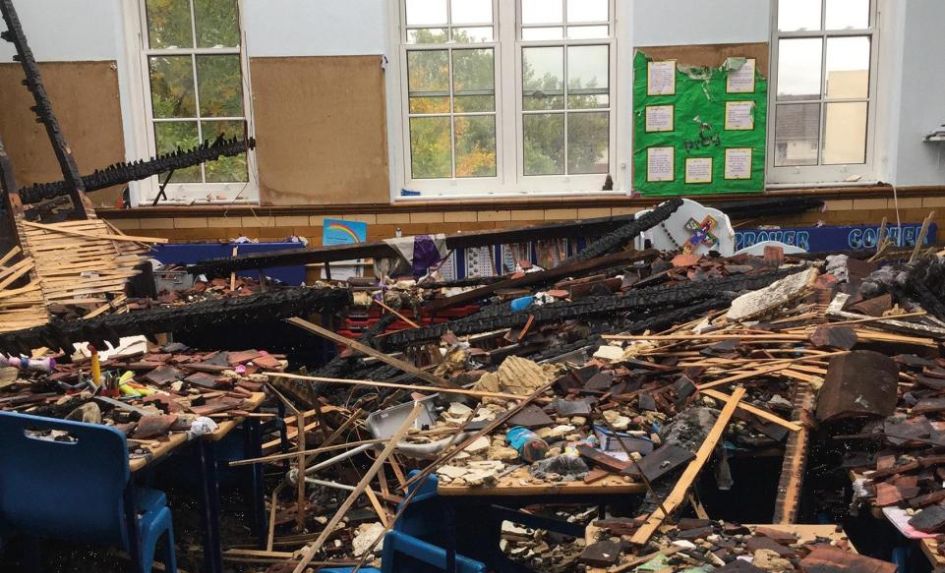Schools in England are nearly twice as likely to suffer a blaze as other types of commercial building. An alarming number of school buildings pose a high fire risk - yet many are poorly protected against a potential blaze. Unless Ministers bring England into line with other parts of the UK, where sprinklers are mandatory, large fires will continue to blight schools. This is harming children’s education and putting lives at risk.
Burnt out schools and classrooms cause major disruption to children’s education, with repairs leading to months or even years of upheaval. They also result in the loss of spaces which local communities rely on out of school hours. As well as protecting pupils, sprinklers drastically reduce the extent of damage when there is a blaze, often confining the fire to a single room. This gets children back into schools and classrooms quicker as well as saving taxpayers’ money.
Research
New research by Zurich Municipal, the leading insurer of schools in the UK, discovered the fire risks posed by 26,866 primary and secondary schools in England. It found the average school posed a fire risk 1.7 times greater than non-residential buildings (with a fire risk score of 0.58 and 0.33 respectively according to Zurich’s model).
When compared to 2.9 million non-household properties, schools were also three times more likely to fall into the “high” fire risk category (58 per cent v 20 per cent), as defined by the study.
Despite being far riskier than average when it comes to fires, many schools also lack the equipment needed to prevent small fires becoming major disasters. Of more than 1,000 school inspections carried out by Zurich, 66 per cent were rated as having ‘poor’ fixed fire protection systems, such as sprinklers. Just 14 per cent were rated ‘good’ or ‘excellent’. A further quarter (24 per cent) were judged ‘poor’ for fire detection measures, such as smoke detectors and fire alarms.
Faulty electrics
Firefighters have been called to nearly 2,000 school blazes in the last three years. Larger fires in schools cost on average £2.8 million to repair and in some cases over £20 million.
The findings have led Zurich to launch a parliamentary petition (https://bit.ly/2RtzKzk) to urge MPs to change the law on sprinklers in schools. While sprinklers are compulsory in all new or major refurbished school buildings in Scotland and Wales this is not the case in England.
Dangers
According to Zurich’s analysis, seven million (7,036,327) primary and secondary school children are taught in the 58 per cent of buildings that are a high fire risk.
In June, Boris Johnson pledged £1bn to fund a decade long school rebuilding and repair programme and a further £560m in early August. Based on large fires alone, Zurich estimates that the repair for school fires could hit £320 million over ten years. Zurich wants the government to ring-fence some of its investment to improve the resilience of schools at high risk of fire. Insurers work closely with schools to help them manage their fire risks but the installation of sprinklers minimise the dangers from the outset. It costs far more to repair fire-ravaged schools than it does to install sprinklers. Even so, schools cannot be expected to pick up the bill. The government’s COVID-19 investment is a critical opportunity to ensure schools are more resilient to fire. Unless the law on sprinklers is changed, much of this funding will be wasted on repairing fire damage.
Tilden Watson, Zurich Municipal’s Head of Education










